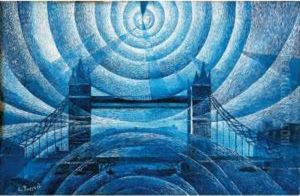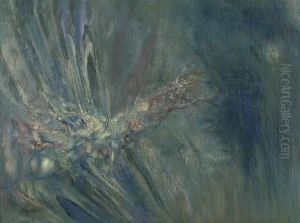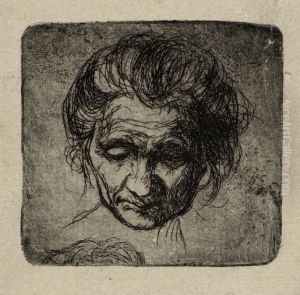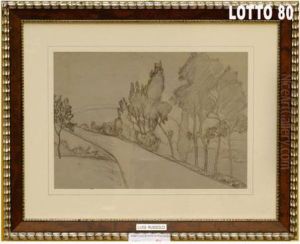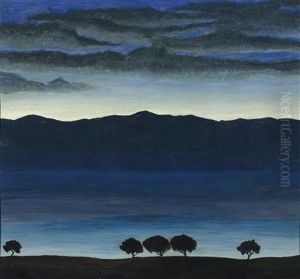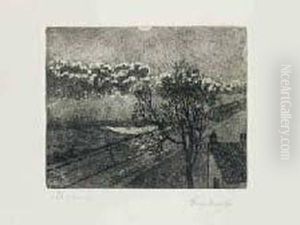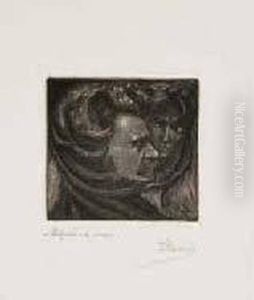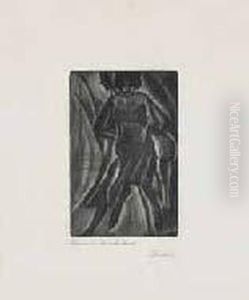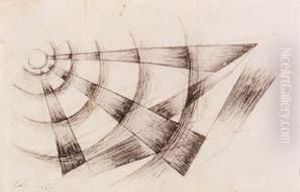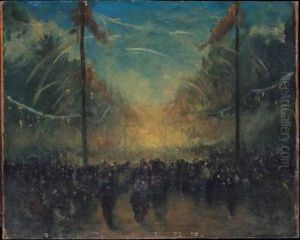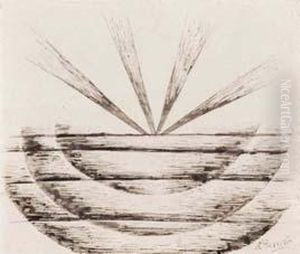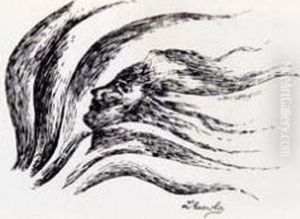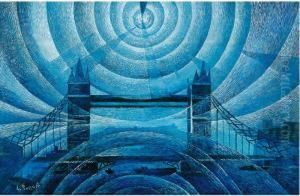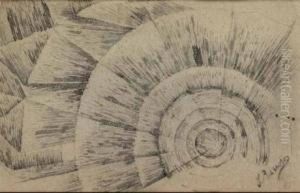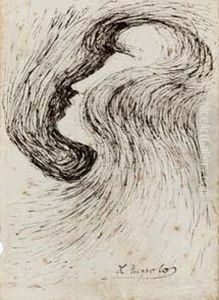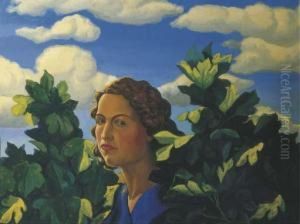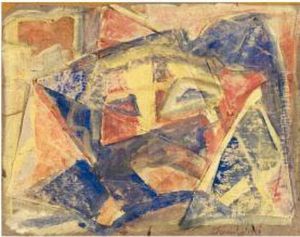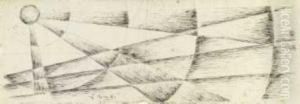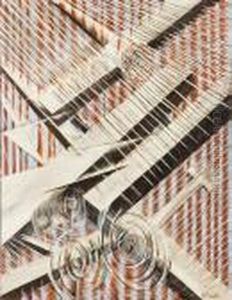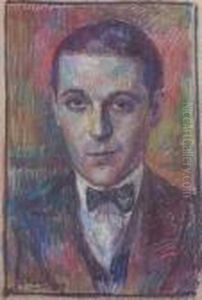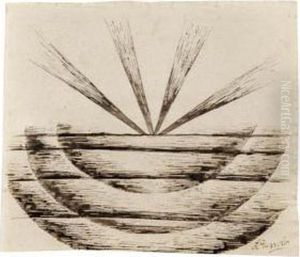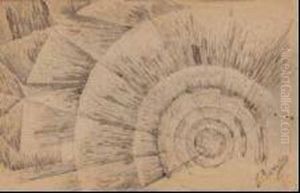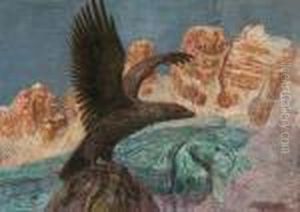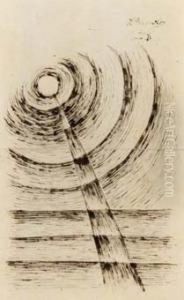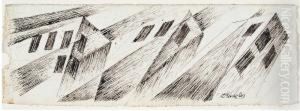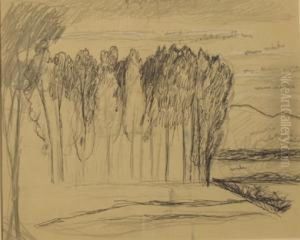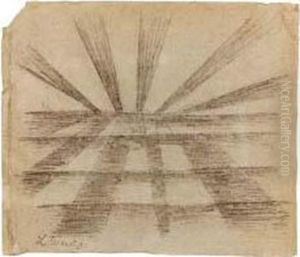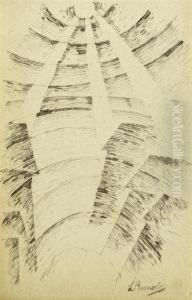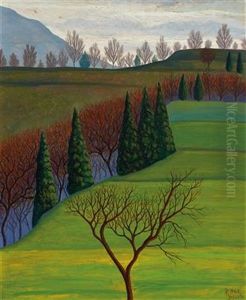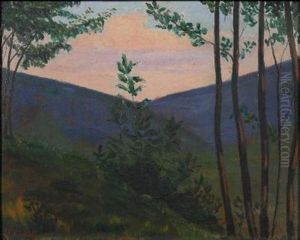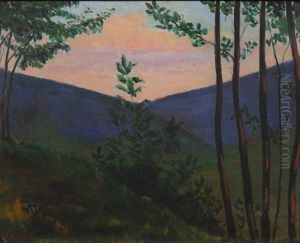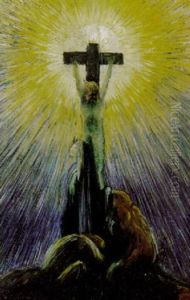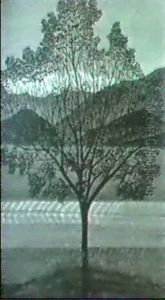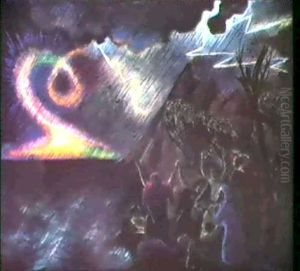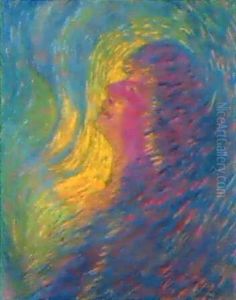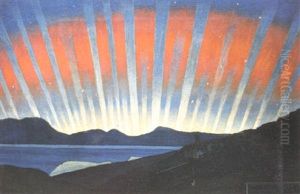Luigi Russolo Paintings
Luigi Russolo was an Italian Futurist painter, composer, and builder of experimental musical instruments. He is often regarded as one of the first noise music experimental composers with his performances of 'noise concerts' in 1913-14 and is known for his manifesto 'The Art of Noises' (L'arte dei Rumori). Born on April 30, 1885, in Portogruaro, Venice, Russolo was a key figure in the early 20th century avant-garde movement, embracing the aesthetic of the burgeoning industrial age with an enthusiasm that broke sharply from classical musical and artistic traditions.
Russolo's artistic career began as a painter; he was associated with the Futurist movement, led by Filippo Tommaso Marinetti. The Futurists celebrated modernity, speed, technology, and the power of the machine age, which was reflected in Russolo's artworks. However, his most significant contribution to art and music was his pioneering work on the aesthetics of noise. In his 1913 manifesto, 'The Art of Noises', Russolo argued that the human ear had become accustomed to the speed, energy, and noise of the urban industrial soundscape; furthermore, he proposed that music should reflect these new sounds, moving beyond traditional harmonic arrangements.
To realize his vision of incorporating noises into music, Russolo invented a variety of noise-generating devices he called 'intonarumori' or 'noise intoners.' These mechanical sound producers were designed to create a wide range of noises, mimicking the sounds of the industrial age, including roars, whistles, hisses, and crashes, which could be musically orchestrated. Russolo and his brother Antonio built a whole orchestra of these devices and held concerts in major European cities.
The outbreak of World War I and Russolo's service in the Italian Army interrupted his artistic activities. After the war, he suffered from injuries and also faced the challenge of his ideas being overshadowed by new musical trends. Nonetheless, Russolo continued to compose and innovate, though he never achieved the same prominence as he had before the war. In the 1930s, he attempted to adapt to new electronic technologies and composed more traditionally, but these efforts did not gain significant recognition.
Luigi Russolo spent his last years in Cerro di Laveno (now Laveno-Mombello), Italy, where he died on February 4, 1947. While Russolo's work as a composer of noise music was not widely embraced in his lifetime, his ideas and inventions have been seen as precursors to various modern musical movements, including electronic music and experimental sound art. 'The Art of Noises' is now considered a seminal text in the field of sound aesthetics, and Russolo is remembered as a radical innovator who expanded the boundaries of musical possibility.
